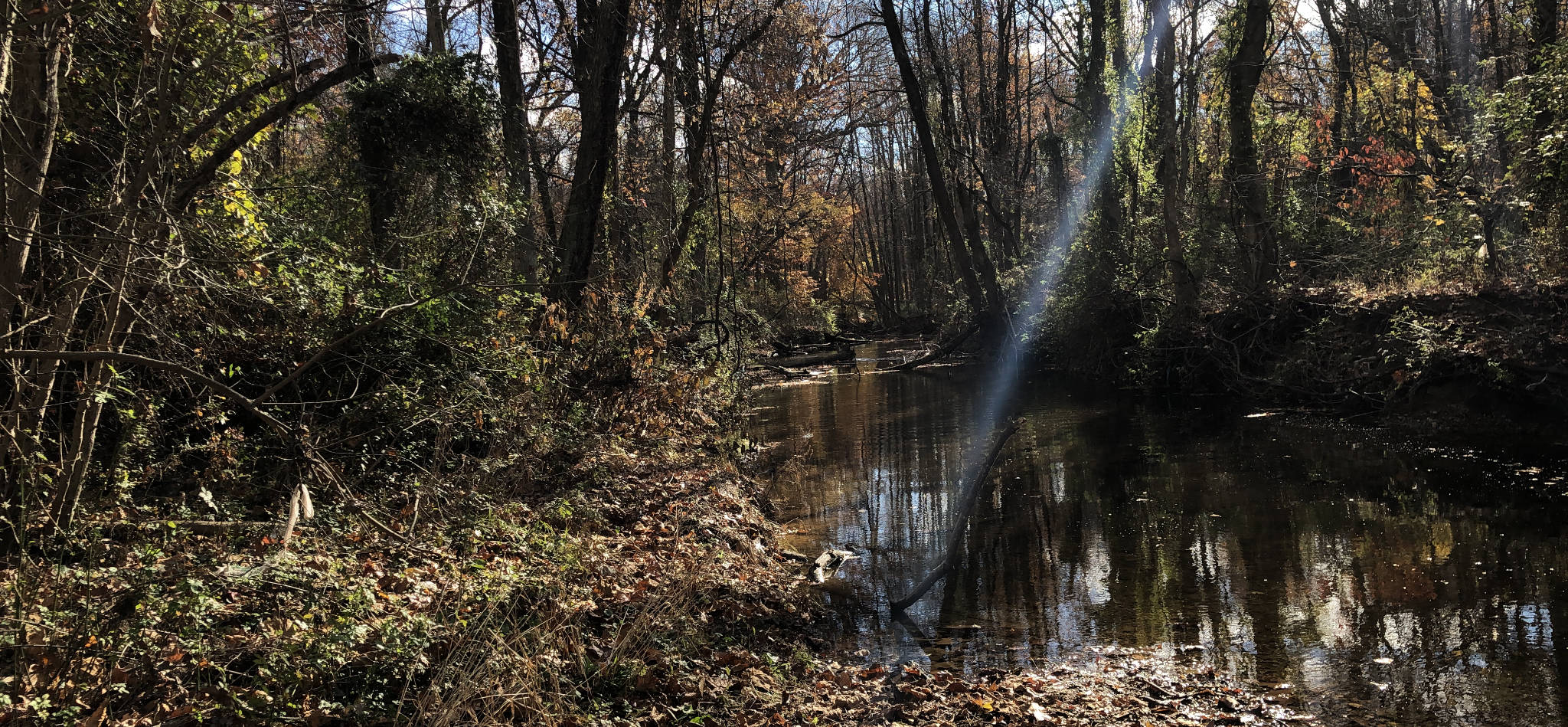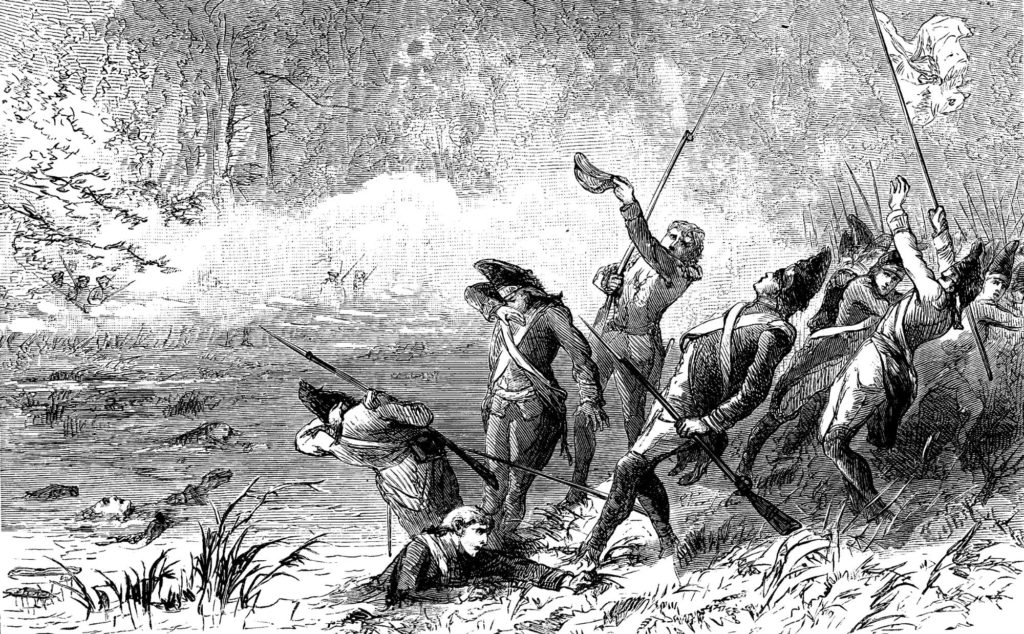Drexel Woods
Trails open dawn to dusk. Nature Center M-F, 8:30 AM to 4:30 PM
(609) 844-7065 Website Google Maps Trail Map GeoPDF
Gravitas: ![]() Challenge:
Challenge: ![]() Proximity:
Proximity: ![]()

Short Walk into History
Drexel Woods is a flat hike in a tiny preserve that barely contains a mile of trails. It’s one we would normally consider of interest only to locals. What provides broader significance is the 2/10 mile section bordering the Shabakunk.
This is near the site of an important skirmish between British Expeditionary Force and the Continental Army. The British were marching to Trenton, under the command of General Charles Cornwallis, in an attempt to destroy Washington’s Army defending Trenton. Washington was willing to risk battle, but prudently chose to delay the British as much as possible. Partly he was hoping that the long march (made longer by delaying actions) would exhaust the British and make them less effective. And partly because he knew fighting would stop at night, which meant the British would have limited time to defeat his inexperienced troops.
In 1777, the northern bank of the Shabakunk was open fields, the south bank (held by about 1,000 American soldiers under the command of Col. Edward Hand) was wooded, as today. In that era, the stream would have had steeper banks and a deeper channel, making it an even more challenging barrier to heavily laden foot soldiers than it would seem now. The vanguard of the British column marching on Trenton reached the Shabakunk around 1 PM in the afternoon. The bridge (near where 206 crosses now) had been destroyed by Hand’s men.
Hand’s men waited under cover until the British advanced guard came into close range, then opened a “deadly fire from ambush” that “forced them back in great confusion on the main body”.

The logic of 18th century firepower is unforgiving. An army marching along a narrow road has to march in a long “column”. If they run into opposition, only the vanguard can fire on the enemy: more or less 3 ranks can fire simultaneously (one kneeling, two standing), so, for example, if the army is marching 8 abreast, only about 24 muskets can fire simultaneously no matter how many troops are marching behind them. In addition, a column attacking defenders with artillery (which Hand possessed) risks enfilading fire: one solid shot can potentially kill or maim dozens of troops lined up one behind the next.
To bring his massive firepower to bear, Cornwallis now needed to stop and deploy his men into a line of battle parallel to the river bank so that more of his 6,000 men could fire on the Americans simultaneously. This was a complex maneuver, especially under fire. He also decided to deploy his artillery and sweep the woods before sending in his infantry. Altogether, it took more than 2 hours before Cornwallis was ready for his infantry assault.
Hand’s men were now under severe pressure, outnumbered by more than 6 to 1. They retreated slowly through the woods, back towards Trenton, and managed to escape with all of their artillery intact.
But they’d won a major victory of time. It was nearly 3 o’clock and only two hours of daylight remained. The bridge over the Assunpink, where Washington’s Army was waiting in prepared positions, was still 3 miles away.
It’s hard to overestimate the impact on American history of this action. Cornwallis’ men didn’t arrive in Trenton until dusk, giving them less than an hour to attack Washington’s Army there. The American defense was able to hold them off.
Then, instead of waiting to fight a pitched battle the next morning, which might have ended the war in Britain’s favor, Washington’s army marched thought the night to Princeton. There they surprised and defeated the small garrison, and forced Cornwallis to retreat back to Brunswick. The news of this victory caused a sensation in London, and helped persuade France to support the American revolutionaries with money, arms, and naval support, all of which proved critical in Britain’s eventual defeat (France’s naval blockade of the British Army at Yorktown led to their surrender).
So, this tiny hiking preserve resonates with important history. In terms of hiking, the trails are wide and easy to follow. While some appear to suffer from poor drainage, an extensive series of boardwalks saves you from most of the mud. You’ll want to park near the Nature Center, and pick up the Blue Trail to take you to the stream.


Dennis Waters
Update: The Nature Center is not open to the public on a regular basis.
Admin
Thanks for the tip. Is that a COVID thing? The Lawrence Township website says otherwise but perhaps hasn’t been updated.